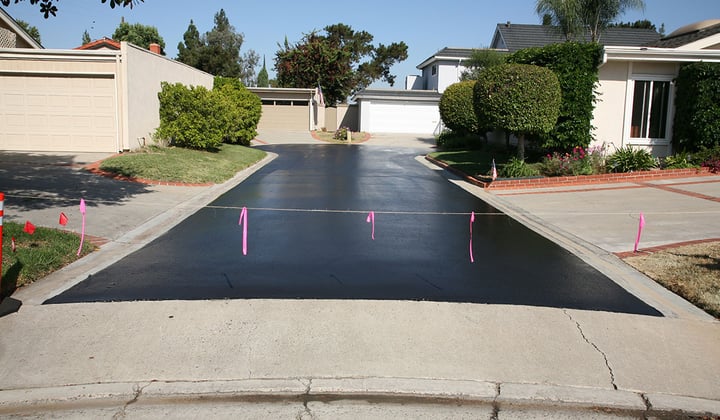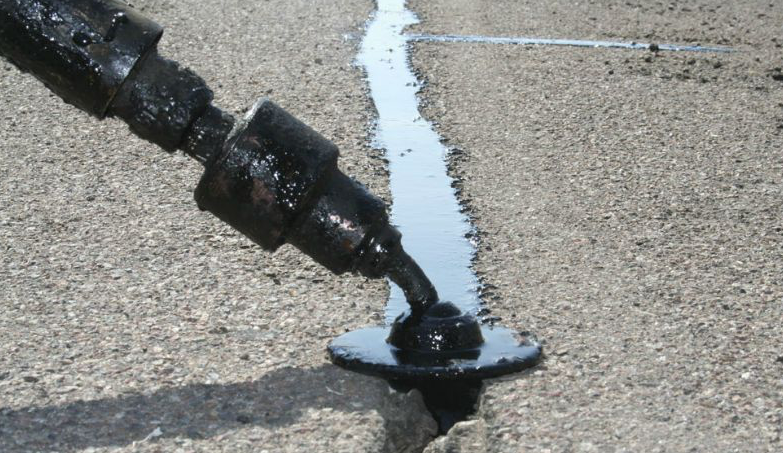Understanding Angled Parking: How Asphalt Sealing Boosts Industrial Whole Lots
Understanding Angled Parking: How Asphalt Sealing Boosts Industrial Whole Lots
Blog Article
Warm Mix Asphalt: A Sustainable Service for Sidewalk
Warm Mix Asphalt (HMA) has arised as a leading sustainable option for pavement solutions, supplying a myriad of ecological advantages and ingenious innovations. As the need for environment-friendly building methods grows, exploring the subtleties of HMA's sustainability can give beneficial understandings right into the future of pavement options.
Environmental Benefits of Warm Mix Asphalt

Furthermore, Hot Mix Asphalt assists to mitigate urban warmth island impacts. Its dark shade absorbs sunlight, minimizing the quantity of heat mirrored back right into the ambience compared to lighter-colored pavements. This can lower ambient temperature levels in city areas, lowering the need for a/c and eventually minimizing power consumption.
Furthermore, Warm Mix Asphalt adds to improved stormwater management. Its porous nature allows water to reenergize and penetrate the pavement groundwater products, decreasing overflow and the danger of flooding. These ecological benefits make Hot Mix Asphalt a lasting selection for leading freeways and roadways.
Energy Performance in HMA Production
Is power effectiveness a critical element in the manufacturing of Warm Mix Asphalt (HMA)? Power plays a significant function in the manufacturing of HMA, influencing both cost and environmental sustainability. One essential aspect of energy effectiveness in HMA manufacturing is the usage of warm mix asphalt (WMA) innovations.
In addition, innovations in plant technologies have actually resulted in even more energy-efficient HMA production procedures. Modern plants are made with functions like recycled asphalt pavement (RAP) processing capabilities, effective heater systems, and boosted insulation, all adding to power financial savings. By optimizing energy use in HMA production, the industry can lower its carbon footprint while preserving premium sidewalk products. Power efficiency is, consequently, an essential consideration in making certain the sustainability of Hot Mix Asphalt manufacturing.
Recyclability of Hot Mix Asphalt
The recyclability of Warm Mix Asphalt (HMA) is a crucial aspect of its sustainability and long-term ecological influence. HMA is just one of the most recycled materials in the USA, with over 100 million lots of reclaimed asphalt sidewalk (RAP) being recycled yearly in new pavement building. Recycling HMA offers a number of ecological benefits, such as reducing the demand for virgin products, decreasing power consumption throughout manufacturing, and reducing the amount of waste sent to garbage dumps.
The process of recycling HMA entails grating the existing pavement, squashing it into visit site smaller sized pieces, and mixing it with new accumulation and asphalt binder to develop a recycled mix. This recycled mix can usually do along with or also far better than standard HMA, while needing fewer resources and producing reduced greenhouse gas exhausts. By incorporating RAP right into brand-new sidewalk tasks, road firms can conserve natural resources, minimize prices, and reduce the environmental impact of road building and construction and maintenance tasks. Overall, the recyclability of HMA plays a significant role in promoting lasting techniques within the pavement industry.

Long-Term Performance of HMA
Asphalt pavements demonstrate sturdiness and durability over an extended period, reflecting the lasting performance of Hot Mix Asphalt (HMA) Furthermore, advancements in HMA modern technology, such as the usage of polymer-modified binders and cozy mix asphalt, have actually additionally boosted the sturdiness and longevity of HMA sidewalks. By prioritizing quality building and upkeep techniques, HMA proceeds to show itself as a lasting and cost-effective service for resilient sidewalk framework.

HMA: Resilience and Sustainability
Showing both resilience and sustainability, Hot Mix Asphalt see page (HMA) has actually ended up being a keystone in the construction of resilient pavement frameworks - regrading. HMA's toughness originates from its ability to endure hefty loads, rough weather problems, and high traffic volumes, making it a reliable option for roads, highways, and airport terminal runways. The composition of HMA, which commonly consists of aggregates, binder, and filler, plays an important role in enhancing its durability and resistance to wear and tear
In addition, HMA's sustainability depends on its recyclability and energy-efficient production process. The capacity to reuse redeemed asphalt pavement (RAP) in new HMA blends reduces the need for virgin materials and reduces the environmental impact of sidewalk construction and upkeep. Furthermore, the power performance of producing HMA hinges on its reduced blending temperature levels compared to other sidewalk products, resulting in minimized energy intake and greenhouse gas emissions.
Verdict
In conclusion, warm mix asphalt (HMA) uses a lasting option for sidewalk with its ecologically friendly attributes. HMA's recyclability, energy performance in manufacturing, and my response long-term resilience make it a green selection for roadway building.
HMA is one of the most recycled products in the United States, with over 100 million bunches of reclaimed asphalt sidewalk (RAP) being recycled yearly in new pavement building.The process of reusing HMA includes crushing the existing pavement, crushing it into smaller items, and blending it with brand-new accumulation and asphalt binder to produce a recycled mix.Asphalt sidewalks show toughness and resilience over a prolonged duration, reflecting the lasting efficiency of Hot Mix Asphalt (HMA) Furthermore, advancements in HMA modern technology, such as the use of polymer-modified binders and warm mix asphalt, have further improved the resilience and longevity of HMA pavements. The capacity to recycle redeemed asphalt sidewalk (RAP) in new HMA mixtures reduces the need for virgin materials and lessens the environmental effect of pavement building and upkeep.
Report this page